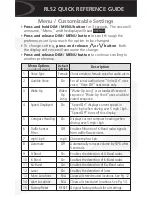
56 | Applications
Aprisa SR+ Product Description
Pseudo Peer to Peer using Base-Repeater Application
This application is used for remote peer to peer communication via a base-repeater or repeater
configuration. In peer to peer, the source RTU will create a message with destination address of the
destined RTU in the SCADA layer protocol (and/or IP layer, if applicable). Note, this address is only known
by the RTUs as the SR+ radio is transparent to SCADA protocol messages. Although all messages sent from
remotes are always destined to the base station, packets can be sent from one remote to the other using
the ‘packet filtering’ peer to peer feature (see the Aprisa SR+ User Manual Radio > Channel Setup) and
base-repeater or repeater configuration.
In the figure example below, RTU 1 would like to communicate with RTU 3, and thus, Remote 1 and
Remote 3 will be configured with ‘packet filtering’ set to ‘disabled’ and the Base station configured as a
Base-repeater.
RTU 1 will create a message destined to RTU 3 and forward it to Remote 1, which in turn will forward it as
a unicast message OTA to the Repeater Station, destined to the Base Station (all packets from a remote
are destined to the base station).
The Repeater Station will store-and-forward the message received from Remote 1 and re-transmit the
message to Base Station, but it will also be received by Remote 2. Since, Remote 2 is not the destination
and packet filtering is set to automatic (enabled), the packet will be dropped by Remote 2. Note, Remote
3 and Remote 4 can’t hear the Repeater Station.
The Base-Repeater will forward the packet to the local ports (Ethernet and/or serial), and will also re-
transmit the packet OTA to Remote 3 and Remote 4 and back to the Repeater (this is specific and default
to Base-Repeater functionality, as packet filtering is not used in Base-Repeater operation and it can be
left in default (automatic)). The Repeater will drop the duplicate packet as this packet is its own forward.
Remote 3 will receive the packet and forward it to it local ports (Ethernet or Serial) and to its local RTU 3,
as packet filtering is disabled which will then process the packet accordingly. Remote 4 will also receive
the packet, but it will drop the packet as packet filtering is enabled. If Remote 4 had packet filtering
disabled, the packet would be forwarded to the local port and dropped by RTU 4, due to SCADA protocol
destination address mismatch (and/or IP destination address mismatch, if applicable).















































